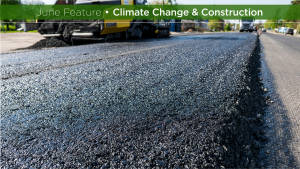Climate change, inflation, plus material and labour shortages, are all tossing new challenges to construction companies, including the need to review insurance coverage and often-ignored items such as soft costs, according to a national construction insurance manager.
“Historically, we saw one in 10 (contractors take out the soft costs insurance),” said Brian Crane, construction underwriter and senior vice-president for Victor Canada, who also has 28 years experience in dealing with construction clients and advising brokers. In the past five to 10 years that figure has been climbing.
Soft-cost losses can be substantial as they average 10 per cent of hard costs but can rise as high as 30 per cent, he said.
Construction companies and owners have routinely insured their hard-costs or potential brick and mortar losses, but the soft-costs are associated project costs.
They include bank charges (interest, commitment fees, standby fees, construction loan fees and financing of repairs) as well as project management costs, equipment rentals, marketing and legal costs, permits and miscellaneous carry costs.
“Why are we selling more soft costs coverage?” said Crane.
He believes the answer lies in greater awareness as Victor has been building active presentations to brokers to show how construction clients can be impacted by lack of coverage. The contractor not only loses those costs, but may incur further out-of-pocket costs as the project restarts.
But, water damage still remains the leading claim today in Canada, said Crane.
Insurance Bureau of Canada (IBC) figures, between 2010 and 2024, show severe weather claims amounted to about $780 million a year but by 2024 rose to record-breaking $8.5 billion.
“That is a staggering increase in claims,” said Amanda Dean, IBC’s vice-president of Ontario and the Atlantic region, in a CTV interview earlier this year.
Large severe weather events in 2024 included the Calgary hailstorm with payouts of $3 billion and Quebec’s flooding payouts of $2.7 billion spurred by inflation, building costs and labour shortages.
Crane said more flooding is causing insurers to look closely at high-risk regions.
“If a project is in a floodplain, we are going to ask more questions,” he said.
He points to a 2022 Globe and Mail article reporting on the University of Western Ontario research of 150 Canadian communities with a population over 10,000 where 30 had at least 10 per cent of their buildings within river floodplains.
Chilliwack, in the study, was considered the city with the highest portion of buildings, 46.5 per cent, in a floodplain although protected by dykes, followed by High River at 35.3 per cent. Much of the development is historical as settlements established near waterways for transportation and water. Some municipalities have begun restricting development in floodplains or removing residents while other municipalities continue building.
Crane said the insurance industry is moving towards mandatory minimum deductions for projects in flood prone areas but is also using provincial data for regions.
“The provinces have excellent mapping tools,” he said, as underwriters turn to these to determine deductibles, rates and exposure in these areas.
Course of construction (COC) coverage or builder’s risk coverage also has caveats tied to changing environmental and socio-economic conditions.
A project longer than 18 months needs to review coverage to ensure it is tied to rising inflation costs for material and labour impacting replacement value (not the current value) of the project. Crane said Victor’s coverage provides some inflation protection but has a limit increase in the five to 10 per cent range.
“Inflation has slowed a bit,” he said, but it still remains an issue.
Projects that run into delays, he said, will need to review their COC coverage period to ensure projects remains insured.
Failing to obtain an extension on a policy would disqualify any claims outside the term. Crane said Victor has now a system in place that queries the policy holder and asks if an extension is needed.
“That is part of our procedure – to follow up,” he said.
Crane said new construction methods are also changing insurers’ risk. Victor has compiled a questionnaire for assessing mass timber construction risk. It addresses encapsulated mass timber, glulam and cross laminated timber but also touches on plywood and oriented strand board.
Fire is a concern on these projects, said Crane.
“One of the most important things is how much dimensional lumber (in mass timber components) are used in the project,” he said.
The smaller dimensional lumber pieces (2x4s and 2x6s) have a higher flame spread and if there is too much dimensional lumber then the risk becomes comparable to a wood frame building.
Moisture remains a threat to mass timber construction as well, said Crane, and insurers want assurances of weather protection in place for onsite storage.
As well, there are concerns of water leaks both externally and internally and the long-term integrity and mould impact on the mass timber components. Water damage on mass timber, multi-storey buildings come with the challenge of replacing these components, an area where not much is known as of yet.
“How is it going to be done?” Crane said, as it is an area insurers are closely watching with an eye to costs.









Recent Comments
comments for this post are closed